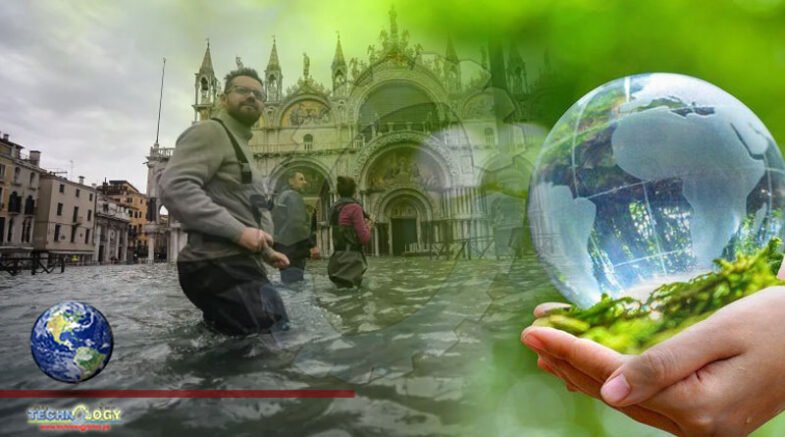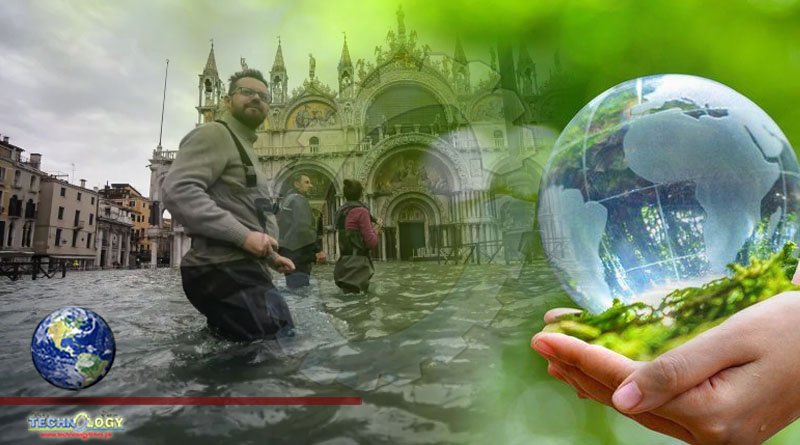The latest UN climate report this week raised the alarm over the “irreversible” impacts of climate changes, such as rising seas and coastal flooding that we will continue to experience for centuries or longer — even if we stop emitting greenhouse gases and halt global warming now.

“We are now committed to some aspects of climate change, some of which are irreversible for hundreds to thousands of years,” said Tamsin Edwards, a climate scientist at King’s College London and co-author of the Intergovernmental Panel on Climate Change (IPCC) report released Monday.
The good news is that some impacts, such the warming of the Earth’s surface, can be reversed by removing carbon from the atmosphere — at least in theory.
What makes some impacts irreversible over others? What does that mean for the impact of cutting emissions and removing carbon? And what does it ultimately mean for the future? Here’s a closer look.
What kinds of long-term, irreversible harm does the report talk about?
The Climate Changes report talks about a number of changes that are already happening — and will continue to happen for centuries, “even if emission of CO2 were stopped immediately.” These include:
- A loss of carbon stored in permafrost into the atmosphere.
- An increase in ocean temperatures.
- An increase in global sea level, which is linked to coastal flooding.
Some changes expected to be irreversible on an even longer timescale — up to thousands of years — include:
- The melting of the Greenland ice sheet.
- The melting of the West Antarctic ice sheet.
- Acidification and loss of oxygen in the deeper parts of the ocean.
So wait — this means some climate changes impacts are reversible?
Yes, in theory.
Many of the scenarios aimed at reaching the Paris Agreement target of less than 1.5 C of warming by 2100 involve a concept called “overshoot.”
Overshoot acknowledges that the average global temperature will rise above 1.5 C temporarily, due to our inability to reduce emissions fast enough. Once we finally stop emitting CO2, it will stabilize at a temperature higher than 1.5 C, said Damon Matthews, a professor and research chair in climate science and sustainability at Concordia University.
“And then correspondingly, if we are able to extract CO2 from the atmosphere, that has the potential to draw temperatures down from that peak level.”
The IPCC report says there’s high confidence that human intervention has the potential to remove CO2 from the atmosphere and store it in reservoirs for the long term, a technology known as carbon capture and storage.
“The idea of carbon dioxide removal is now much more accepted than it has been previously as something that might be possible to achieve,” Matthews said.
Global temperature changes aren’t naturally reversible, he said, which may be why many of us may have previously had the impression that, generally, climate change was irreversible.
So which changes are reversible? And how is that possible?
Both surface temperature and acidification of the ocean’s surface (but not the deep ocean) are expected to be reversible, the IPCC report said, noting that “other climate changes would continue in their current direction for decades to millennia.”
The reversible changes are directly related to the amount of CO2 in the atmosphere, and respond “relatively quickly” to changes in that amount, Matthews said.
Some of the current warming is due to methane, a greenhouse gas that is much more short-lived than CO2 — albeit more powerful in terms of trapping heat. It has a lifetime of just 12 years, compared to hundreds of years for CO2.
“So the amount of warming caused by methane, for example, is much more reversible than the amount of warming caused by CO2,” Matthews said. “And if we are able to decrease emissions of methane very dramatically, that also has a potential to ultimately reverse some of the warming that … has been caused previously by methane emissions.”
But don’t get too excited yet.
The global temperature will stabilize when we stop adding CO2 to the atmosphere — a point called “net zero” emissions, where any remaining emissions are “cancelled out” by carbon capture or removal.
But Matthews said it will take much more time to remove CO2 already in the atmosphere, enough to lower the global temperature.
“This will benefit future generations, potentially,” he said. “Almost nothing is reversible on the timescale of a few decades.”
Why are some climate impacts less reversible?
“Any processes that involve the ocean or glaciers or permafrost are processes that have a much longer timescale associated with them — much more inertia,” explained Matthews.
A lot of interdependent slow processes contribute to that, in addition to the fact that water expands at higher temperatures, said Greg Flato, a senior research scientist with Environment and Climate Change Canada and vice-chair of the IPCC group that authored the report.
“The sea level will continue to rise because large ice sheets, especially, take a long time to come into equilibrium with a new temperature,” he said. “And the deep ocean takes a long time to warm up to a level that is consistent with the surface.”
The temperature of the ocean is “still responding to CO2 that we put into the atmosphere decades ago,” said Matthews, and hasn’t yet had time to react to more recent emissions, which it will gradually do in coming decades or centuries.
What will the impact of these irreversible changes ultimately be?
Patricia Manuel, a professor in the School of Planning at Dalhousie University in Halifax, has been thinking about that for a long time. She’s been studying how coastal communities need to plan for climate change and its impacts, particularly higher sea levels combined with more extreme weather and the flooding that will come with that.
“Greenhouse gas emissions have more or less committed us to a very long-term sea level rise,” she said. “We need to plan for that.”
That also means coming to terms with the permanence and irreversibility of it, she said. Land that people have relied on for centuries or more and is tied to their history will disappear.
“It’s a real mental shift … those shores aren’t going to exist in that location much longer,” said Manuel. “It’s a disturbing thing to think about, to know you’re leaving behind potentially things that are very dear to you culturally and economically.”
Because such changes are slower, in theory, they should be easier to plan and adapt for, by moving infrastructure such as roads and dikes back from the coast, stabilizing dunes and adding wetlands and oyster reefs for protection.
But in practice, she said, that kind of planning is difficult. “We’ve already seen how difficult it is — because we’re still not doing it.”
Meanwhile, the rate of sea level rise is ramping up.
Will reducing emissions have an impact on irreversible, long-term harms, like rising sea levels?
Yes, absolutely.
While a certain amount of change is already locked in for the long-term, any change will happen more quickly with increased emissions.
“The rate of sea level rise will depend on future emissions,” said Flato.
By 2100, sea level will likely rise 0.28 to 0.55 metres if greenhouse gas emissions are cut dramatically. But if emissions are remain high, sea level will likely rise 0.98 to 1.88 metres by the end of this century. And in that case a sea level rise of two metres by 2100 and 5 metres by 2150 can’t be ruled out, the IPCC report said.
Over the next 2,000 years, the global mean sea level will rise by about two to three metres if warming is limited to 1.5 C, two to six metres if limited to 2 C, and 19 to 22 metres with 5 C of warming. And it will continue to rise over subsequent millennia.
Similarly, irreversible changes to ice sheets, glaciers, permafrost and the deep ocean will be faster and more extreme with higher emissions.
That’s also the case with theoretically reversible climate changes related to temperatures, such as extreme heat, drought and wildfires.
“If we don’t succeed in stabilizing temperatures, it’s not going to matter if [climate changes] were reversible or not,” said Matthews. “Because we will be in a new climate regime and we’ll be having to deal with very dramatic and potentially catastrophic climate impacts.”
Reaching net zero emissions to stabilize the temperature is key, he said.
“That will be the first thing that determines what level of impacts we will experience over the coming decades.”
Source CBC Canada
